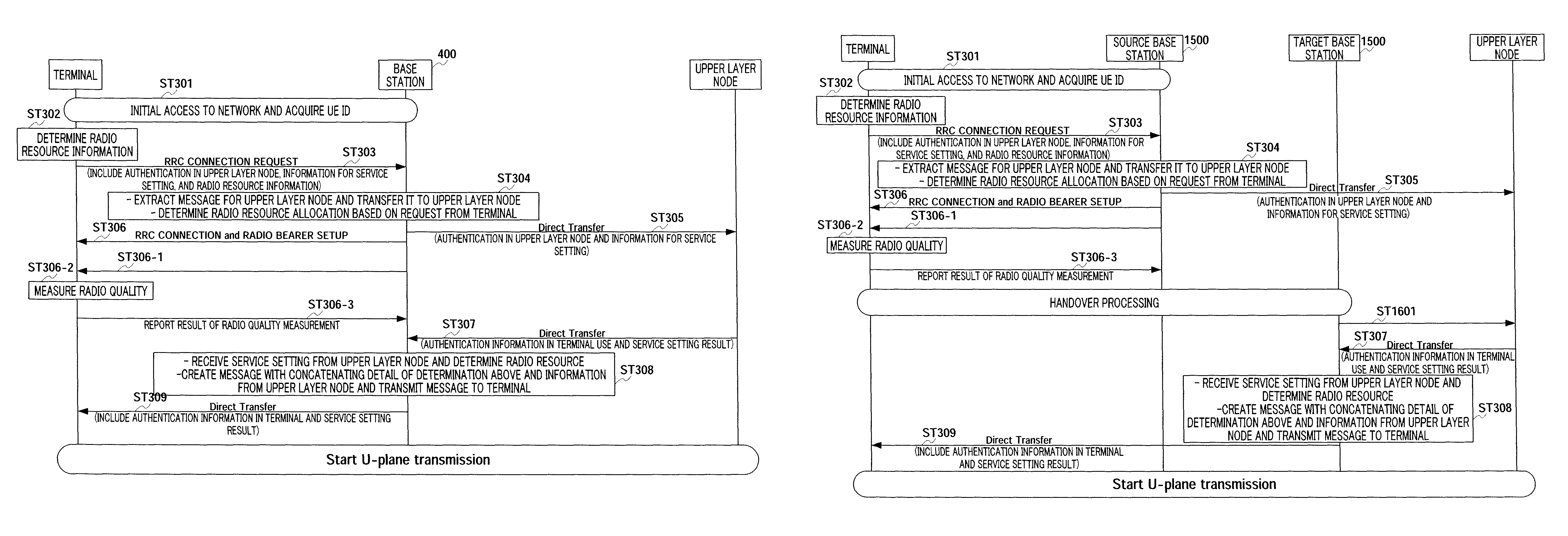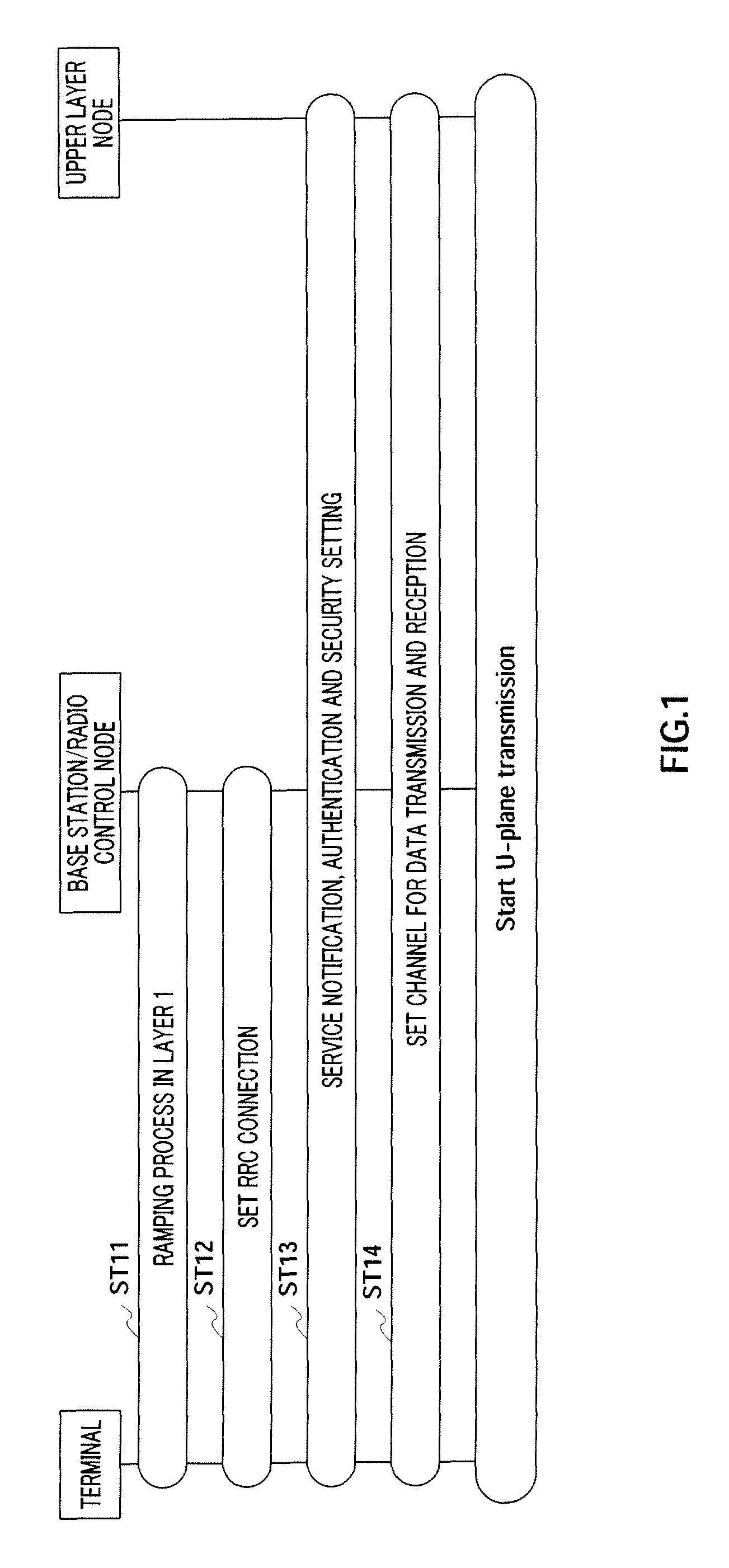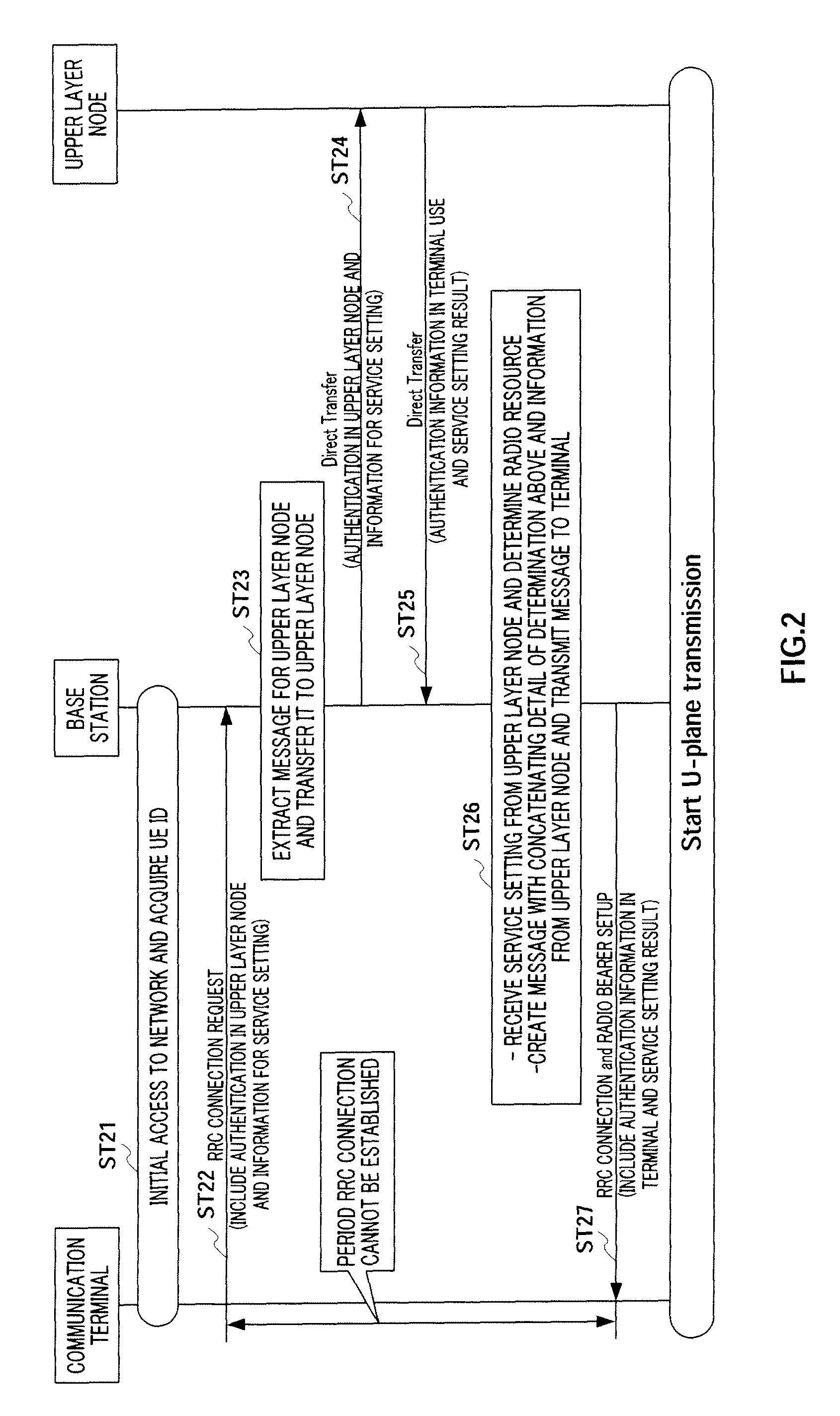Radio communication base station device and call connection method
a radio communication and base station technology, applied in the field of radio communication base station apparatus and call connection method, can solve the problem of time-consuming call connection, and achieve the effect of reducing the delay of call connection
- Summary
- Abstract
- Description
- Claims
- Application Information
AI Technical Summary
Benefits of technology
Problems solved by technology
Method used
Image
Examples
embodiment 1
[0056]FIG. 3 is a block diagram showing the configuration of base station apparatus 100 according to Embodiment 1 of the present invention. Referring to this figure, terminal control message receiving section 101 receives messages (for example, messages such as RRC messages and NAS messages, which correspond to layer 3) transmitted from a communication terminal apparatus (hereinafter a “terminal”), and divides the messages into the messages to be processed in the base station apparatus (hereinafter a “base station”) and the messages to be processed in the upper layer node. Terminal control message receiving section 101 outputs the messages to be processed in the upper layer node to terminal-originating upper layer node addressing message processing section 102 and outputs the messages to be processed in base station 100 to terminal-originating base station addressing message processing section 103. However, if messages for the upper layer node are transmitted apart from RRC messages...
embodiment 2
[0083]FIG. 7 is a block diagram showing the configuration of base station 400 according to Embodiment 2 of the present invention. Referring to this figure, radio quality measurement controlling section 401 stores cell information and so on, and, upon receiving an RRC connection establishment notice from radio control section 107, controls the terminal to measure radio quality. To be more specific, radio quality measurement controlling section 401 notifies to the terminal which cells are measured, how the cells are measured (for example, bands and cycles) and how to report. That is, radio quality measurement controlling section 401 transmits control information for controlling this terminal, to terminal control message transmitting section 105.
[0084]FIG. 8 is a sequence diagram showing the operations of the network according to Embodiment 2 of the present invention. Further, in FIG. 8, the same reference numerals are assigned to the same parts as in FIG. 5, and description thereof in...
embodiment 3
[0104]FIG. 17 is a block diagram showing the configuration of base station 600 according to Embodiment 3 of the present In this figure, providing service management section 601 manages the available services before the upper layer node issues an authentication and determines the details of services, and, when providing service management section 601 provides the managed service, providing service management section 601 outputs control information for providing services to terminal control message receiving section 101, terminal-originating upper layer node addressing message processing section 102, upper layer node control message receiving section 104, terminal control message transmitting section 105 and radio control section 107. These services include a SIP signaling message (hereinafter abbreviated as “SIP Signaling”), for example. That is, a SIP Signaling is a control operation before a terminal actually receives a service, and, after this processing, it is possible to provide...
PUM
 Login to View More
Login to View More Abstract
Description
Claims
Application Information
 Login to View More
Login to View More - R&D
- Intellectual Property
- Life Sciences
- Materials
- Tech Scout
- Unparalleled Data Quality
- Higher Quality Content
- 60% Fewer Hallucinations
Browse by: Latest US Patents, China's latest patents, Technical Efficacy Thesaurus, Application Domain, Technology Topic, Popular Technical Reports.
© 2025 PatSnap. All rights reserved.Legal|Privacy policy|Modern Slavery Act Transparency Statement|Sitemap|About US| Contact US: help@patsnap.com



